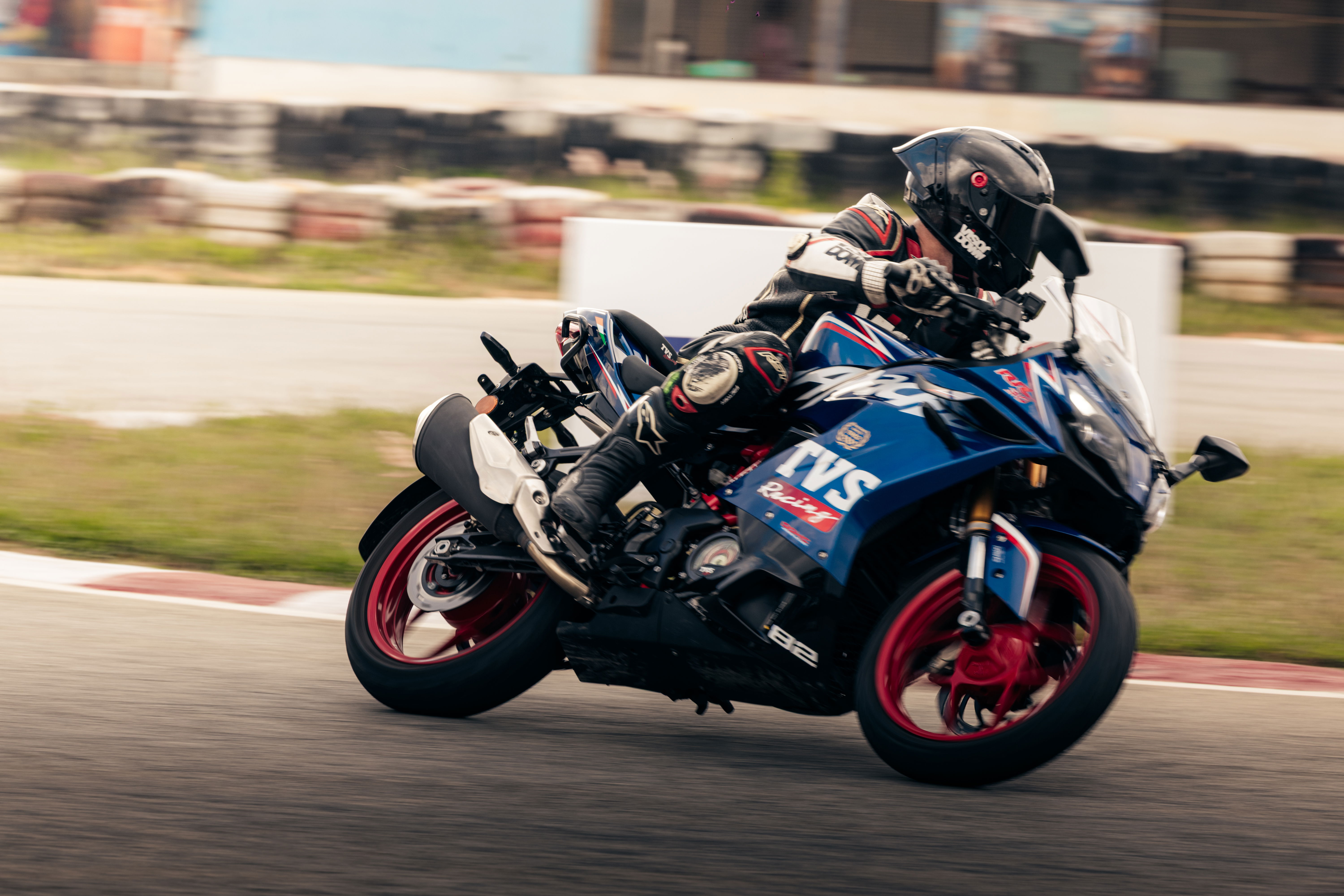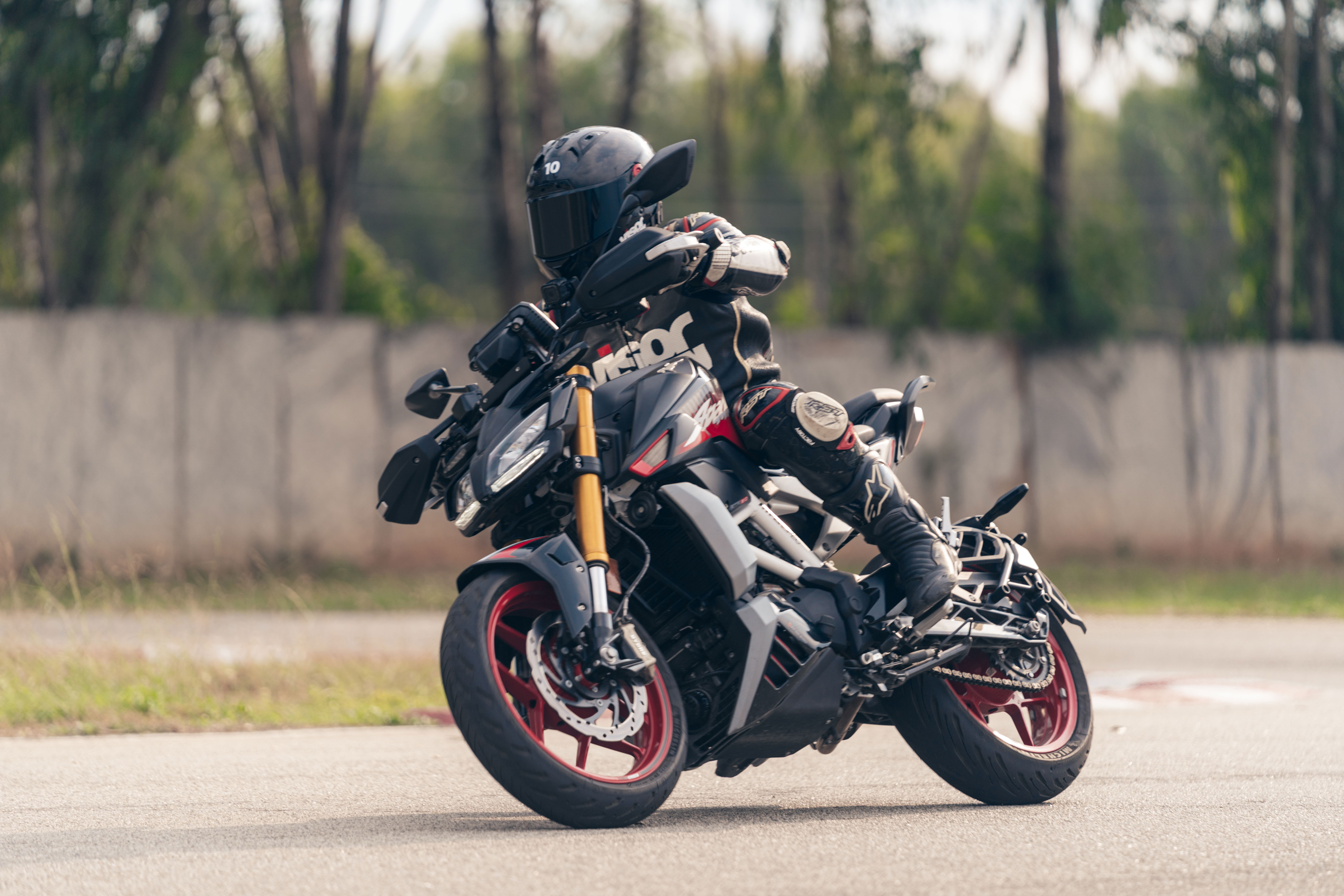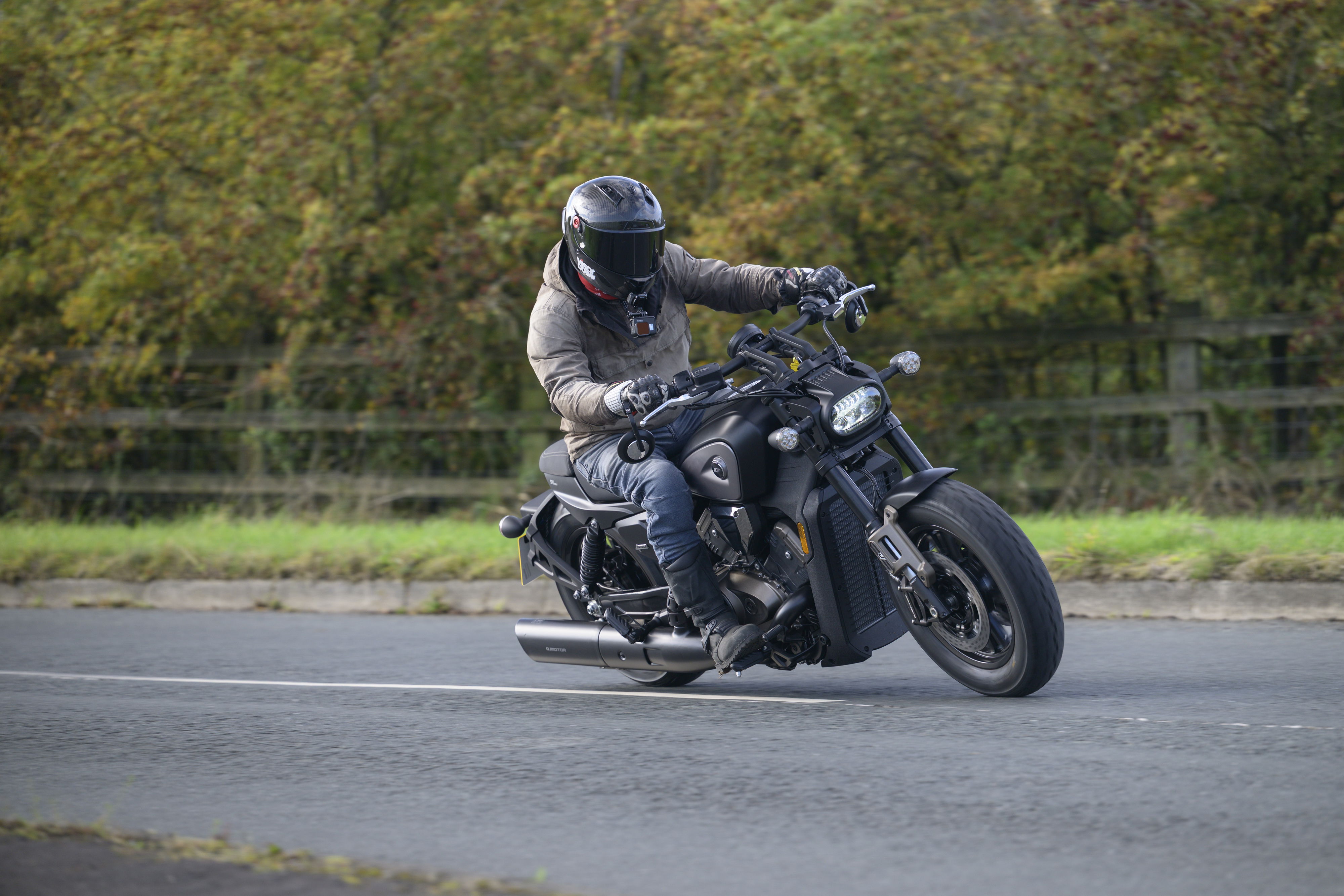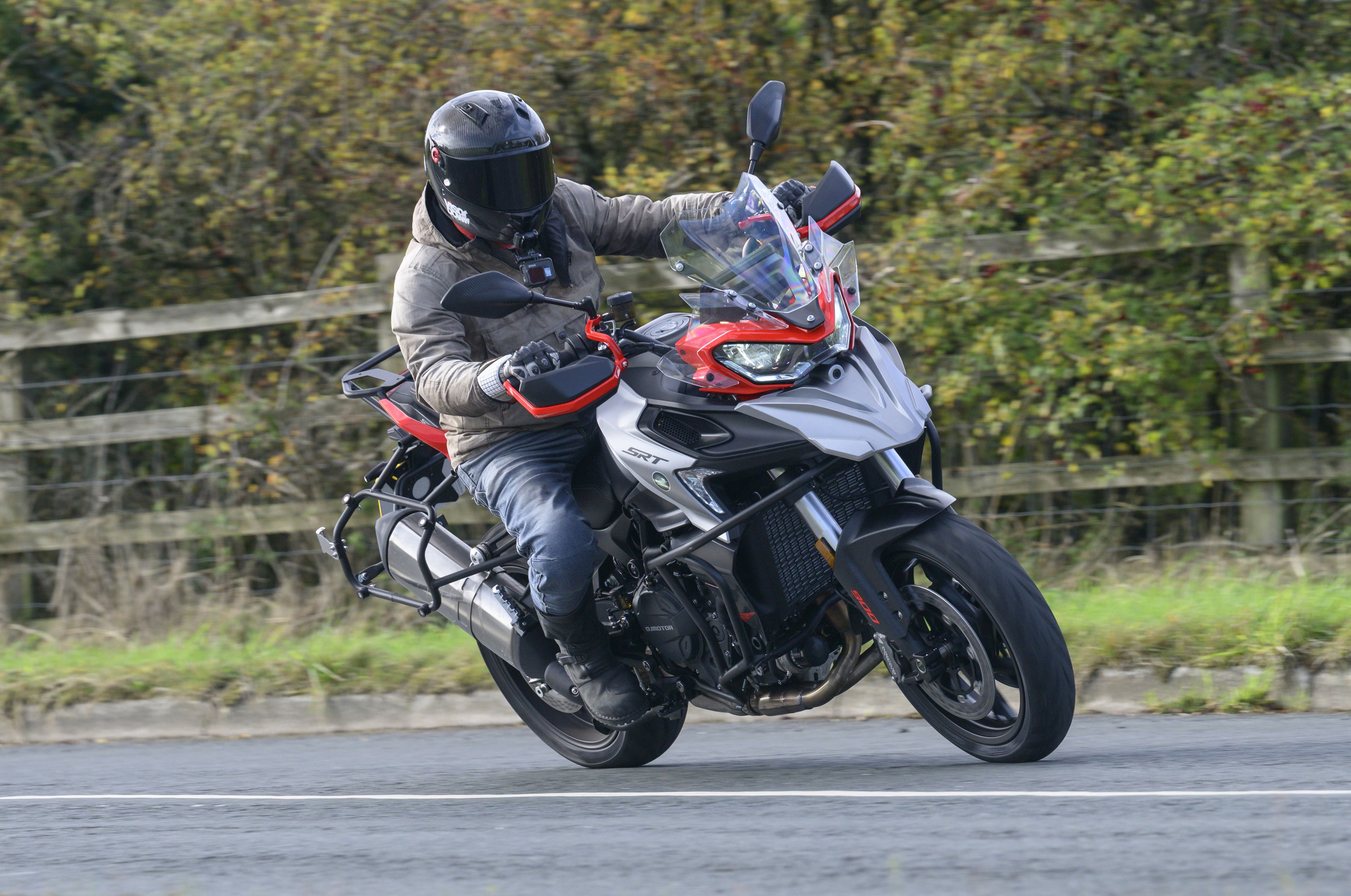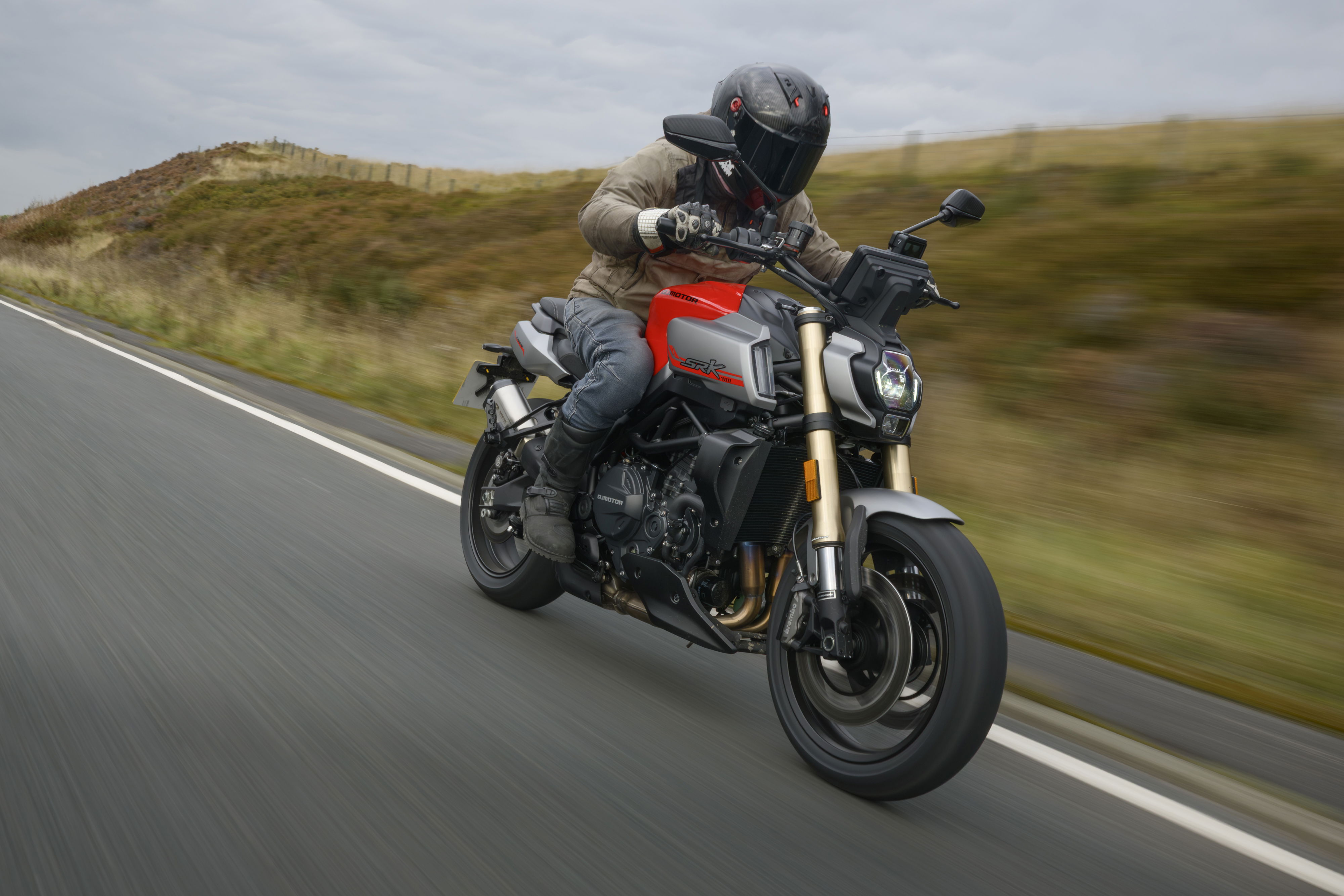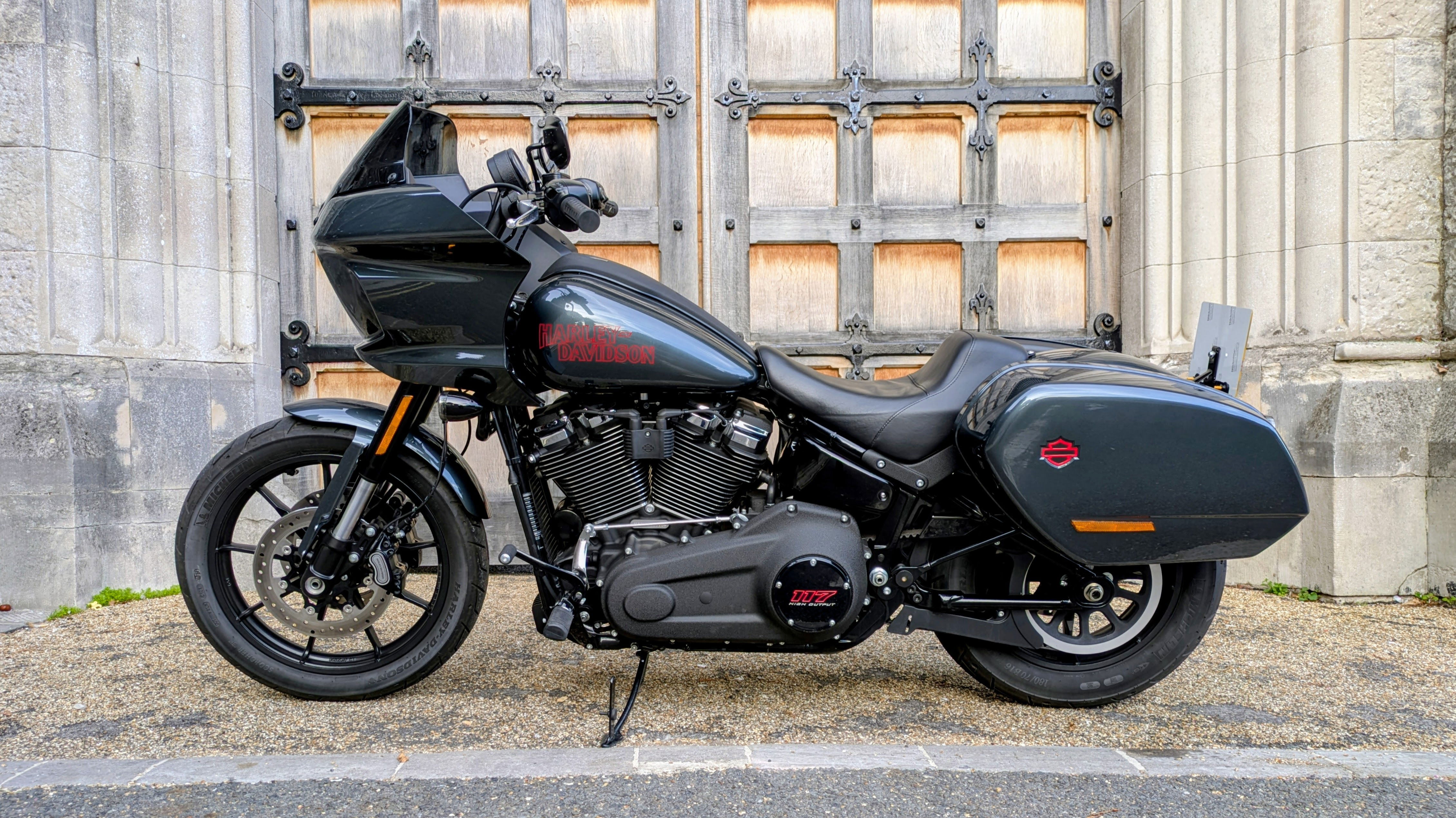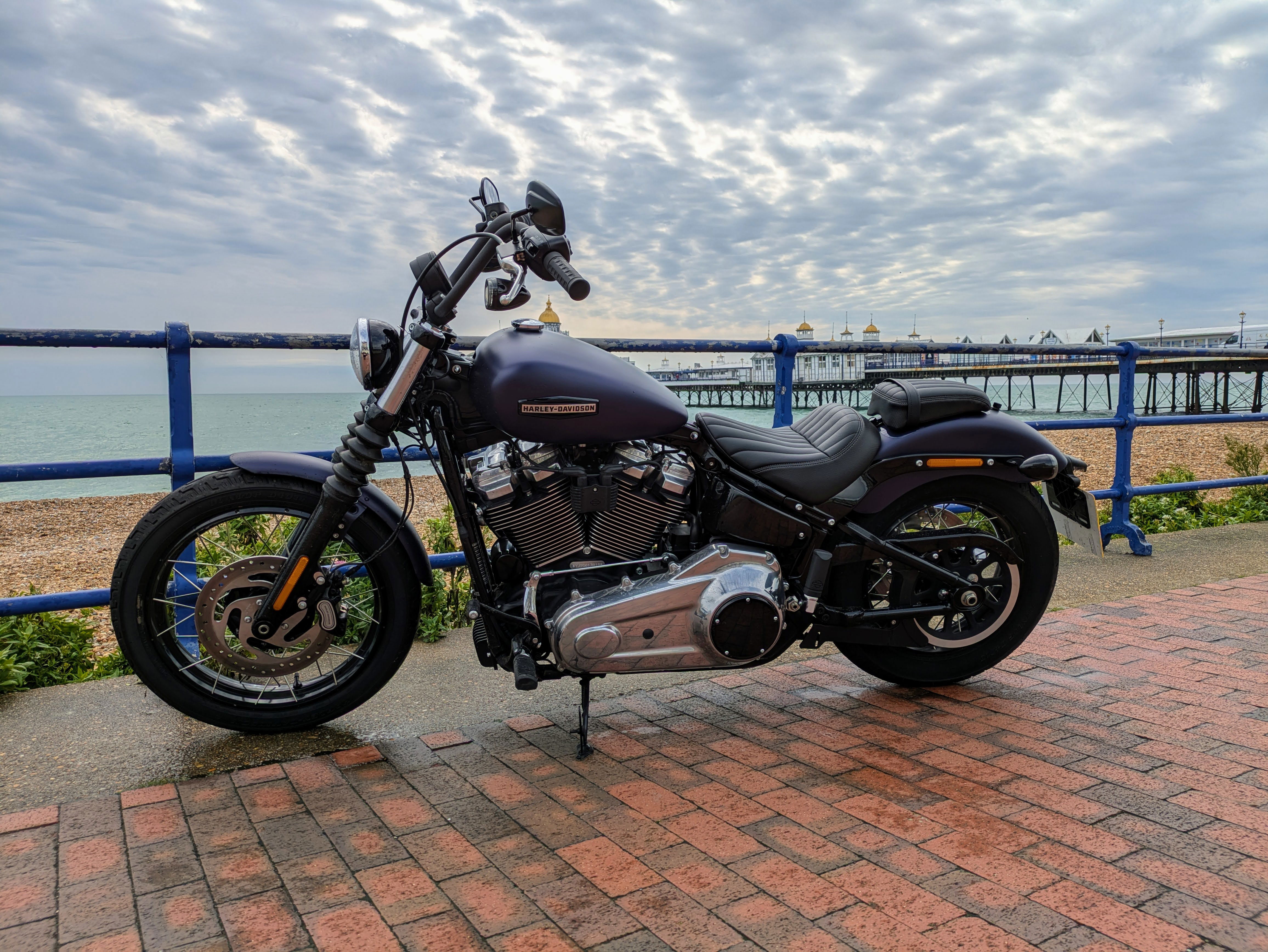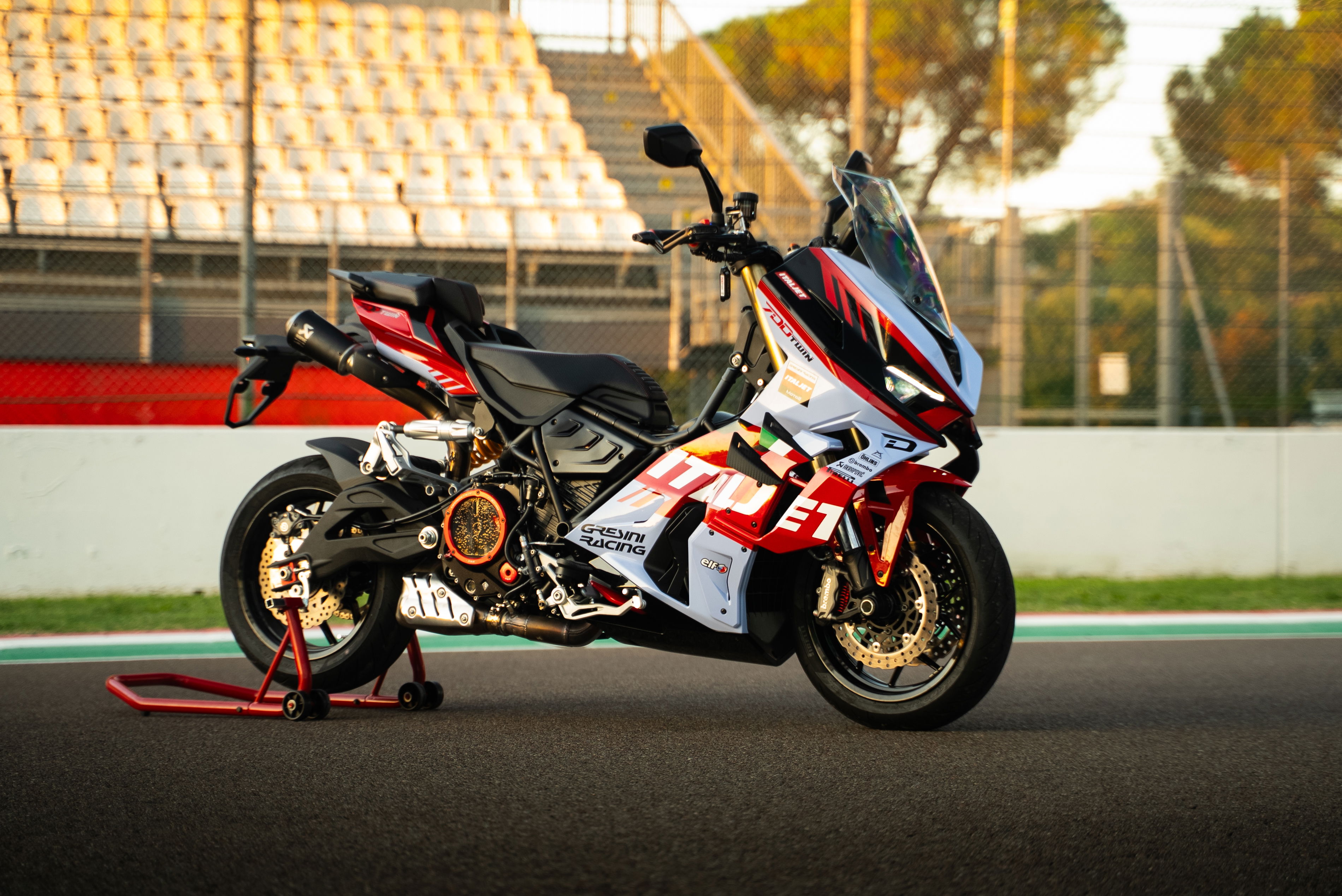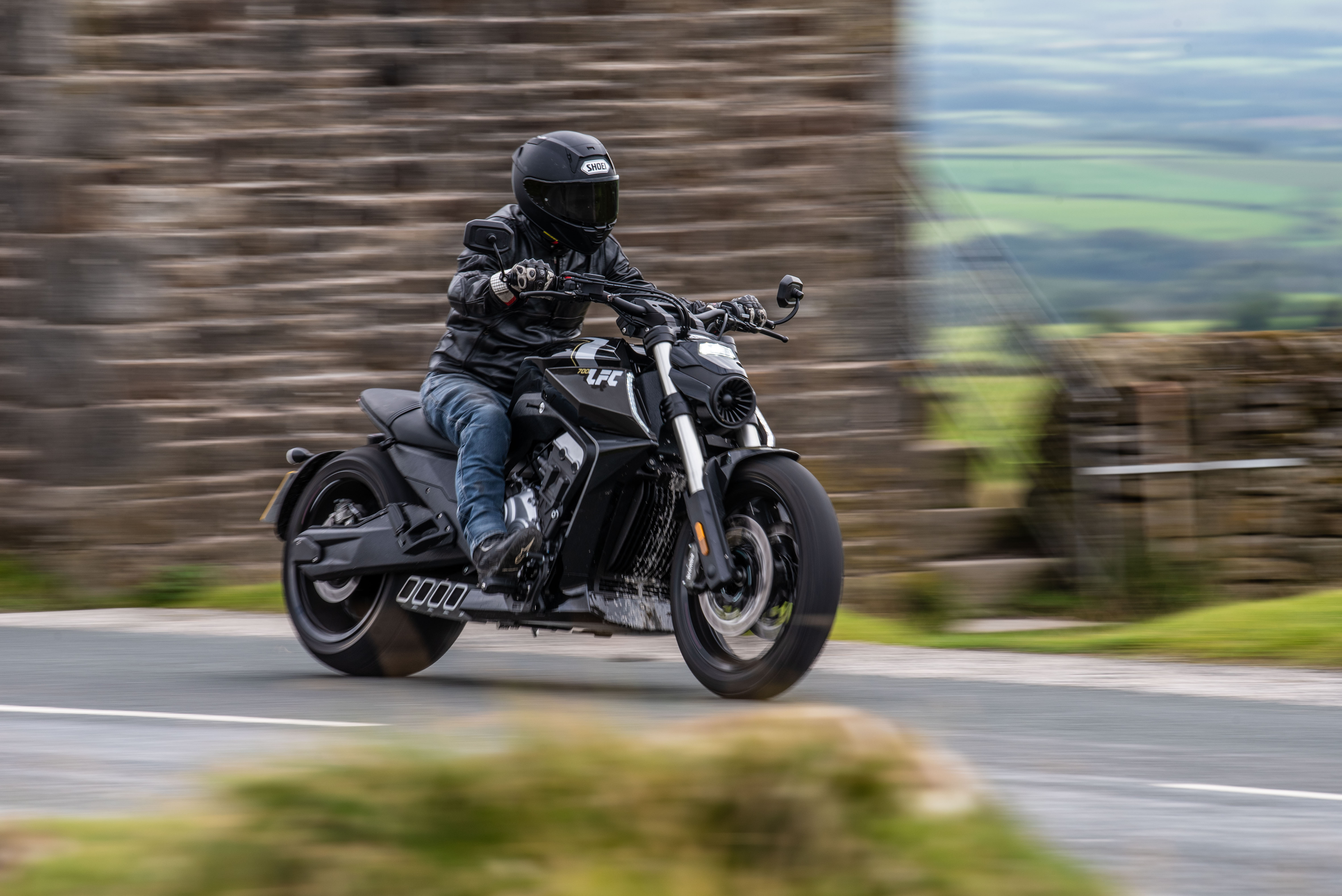Supermoto Review: Suzuki DR-Z400SM vs. KTM LC4 and more
It's supermoto-a-go-go as Team Two heads to France on a madcap mission to raise the Pyrenees to the ground. Allez!

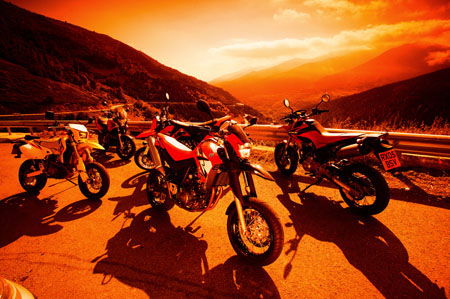 |
Supermotos. What are they all about? It's a question that's been floating around for years and no one seems to really know the answer. Having started out as a hardcore minority of converted 'crossers, the supermoto scene has bubbled away in the background and is now spilling over into the mainstream.
But is it really in the mainstream? While we have several UK supermoto race series coverage hasn't leapt beyond obscure satellite TV stations and the whole concept of supermoto has been morphed into something completely different. Gone are the back-garden specials, replaced my mass-produced models of what manufacturers think supermotos are. Which is where the confusion really starts.
With our five bikes unloaded from the back of the TWO van the variation between them was clear to see. On one side of the spectrum you have the KTM LC4, which is about as close as you can get to a true competition supermoto. As well as the chunky, racing wet-style tyres, the KTM has all the makings of a converted enduro tool, which it is - the LC4 E it's evolved from (that's 'E' for 'Enduro' in case you were confused) is virtually identical but comes with off-road wheels and different suspension.
Moving along we get Suzuki's DR-Z400SM, which again is a converted enduro bike. But it's a converted enduro bike that was fairly road-biased to start with. So it's a road bike that has come from a fairly easy-going enduro bike that was really just a road bike anyway. Clear? Let's move on. Next comes Yamaha's XT660X, which is a descendent of the good old XT660. In 2004, the XT got a bit of a makeover and out popped the supermoto 'X' version, as well as a funked up 'R'. So it's a soft enduro bike that has been re-designed with supermoto in mind.
Aprilia's ancient Pegaso big trailie has been re-born as the Pegaso 650 Strada, all street focused and supermoto-styled but with a decent nod towards daily practicalities. And finally there's the FMX650, which Honda says isn't a supermoto at all, it just looks like one. It's a Funmoto, whatever that is. Confusing, ain't it?
Then there's the big question: Why do you want a supermoto? You can't go touring, the tank range is tiny, there's naff all comfort and they vibrate like an Anne Summers party after a case of Lambrini. Motorways are out because the engines struggle to hold a constant 70mph, while the riding position hangs you out like a human kite. So, apart from riding in town, what can you do? You've got to get creative. Dunk these babies in the right environment - sunshine, tight twisty roads, and away from prying plod - and suddenly nothing else matters; they could just be the best toys on the planet. Which is why we punted ours to the South of France in the back of a van (expenses wouldn't stretch to the pile cream bill if we rode them) for a few days' charging around the Pyrenees.
Perpignan's only 40-odd miles from the Pyrenees and thanks to local knowledge we know the N116 from the town into the mountains is a stunning road to ride. And anyway, if things aren't good in France it's just a short hop into Spain or Andorra.
So it came to pass that Jim, Rob, Wozza, dedicated van man Daryll and myself found ourselves looking out over one of the most stunning twisty roads we'd ever seen. "I'm not sure I'd fancy that on a sportsbike," said Jim. "It'd be too fast. The only thing between you and a very long drop is a bit of rusty Armco. These bikes should be perfect, fast enough for fun, but without getting messy."
Perfect supermoto country then. Lots of 40-50mph corners, a surface that, on the whole, is excellent, but with a few bumps thrown in. Leathers and helmets on (er, motocross or road lid?) boots done up (same dilemma) and away we go.
Thirty miles of chaos later the road behind is covered with black lines from pointless and highly amusing skids, cars have been wheelied past and every pedestrian within earshot has been backfired at as five grinning riders pull up at a petrol station.
"This is the real deal, a proper supermoto," KTM mounted Jim virtually sobbed. "It vibrates so much at high revs I can hardly see the mirrors let alone what's reflected in them, and I think the seat's broken my coccyx." It's worth pointing out that Jim is particularly brittle, but it shows the nature of the KTM. The orange peril isn't pretending to be friendly so you get a solid seat, vibey engine and zero mod cons. But you also get a very aggressive bike.
"It's a really strong motor," Jim went on, "and pulls hard from low down with a typical, precise enduro gearbox, but riding it for more than an hour? No thanks." And with that he rested his lid on the DRZ's softer seat in an 'I'm riding that one next' way.
Yeah, well, no one said they would be comfortable Jim, that's what you get with a supermoto. Fun to ride but lacking in creature comforts. But what about Honda's softer 'Funmoto', the FMX650?
"It's quite a surprise this," mused Rob. "I thought with it being called a Funmoto and aimed at new riders it would be soft and no good, but it isn't. The handling's really agile. Usually with supermotos they feel a bit strange and don't handle like road bikes, but this steers really sharply. I guess it's because it has been designed as a supermoto - or Funmoto or whatever - from the ground up rather than being a modified enduro bike."
While it looks like a supermoto Honda are keen to stress the FMX isn't a supermoto, more of a first big bike for young riders or an easy-going bike for city riders. Presumably these riders won't want to travel far from their homes because, while it isn't too bad, the Honda's seat isn't good for much over 50 miles. But they will enjoy the ride; while it's built on a budget - just check out the 1940's clocks - the FMX works together brilliantly as a package, with one slight weakness.
"That engine's disappointing," said Wozza after his stint on it. "I've ridden Dominators that felt more powerful, and the motor is basically the same. I'm sure the twin pipes are strangling the engine. Get a set of freer-breathing pipes on it and it'll be much more exciting. Even the DR-Z feels more powerful and it's 250cc smaller."
Throughout the day the little DR-Z impressed. It may only have a 400cc engine but the Suzuki holds its own, mainly thanks to water-cooling. Where the air-cooled FMX makes 34bhp the Suzuki stomps it with 39bhp while revving faster and higher. True, it doesn't have as much torque so it needs revving, but the engine's a beauty with a slick gearbox and a reasonable lack of vibes.
"Like the KTM the DR-Z feels like a proper supermoto," Daryll reckoned, "but it's much easier to live with. It's not that much slower but riding it fast is far more rewarding. The handling is lovely, especially on tighter turns, and it feels like a toy. I'm not a massive fan of the styling but there is definitely something really endearing about the Suzuki. I like it."
This particular DR-Z is actually my longterm test bike and I've covered almost 2000 miles on it since it arrived at the office in May. While almost all of this time has been spent within the M25 I've also developed a soft spot for the Suzuki. The 20-mile trip through rush hour traffic to work is perfect supermoto territory and the DR-Z is a perfect bike for it. You don't need to go over 50mph in London, and for short trips the hard seat is manageable.
Where the Suzuki manages to be great in town and excellent on the open road, the Aprilia is great in town, but lacking when the pace ups. "It's just all wrong," said Rob after a blast on the Aprilia. "It's too low. You sit in it, rather than on it like the other supermotos, which makes the bars too high, and the handling doesn't feel quite right. Ground clearance is limited and the front doesn't feel good. With the other bikes you can dominate the front because you're sat over it more but you can't do this with the Pegaso. To be fair it isn't really a supermoto, but I'm not actually sure what it is. Apart from a bit ugly..."
Now we've hit the other extreme. Where the KTM is so much of a supermoto it becomes impractical and a pain to ride, the Aprilia is too much of a town bike to really ride hard on tight and twisty roads. It isn't a bad handler, just not really good at a high pace. But then you get some great practical features when it comes to town riding. For a start there is the tank cubby hole, operated by a release on the handlebar. A clever idea, it's just a shame it's only big enough for a Mars bar. The seat's really comfortable, mirrors fairly good and the digital display clear with a fuel gauge, not a poxy fuel-tap or warning light like the others. All neat, practical touches for a city rider, which is who the Pegaso is aimed at. But it could have been so much more - just look at the Yamaha to see what.
Both the Aprilia and Yamaha share the same 660cc motor, but where Aprilia decided to put it in a soft chassis Yamaha created a civilised supermoto with a hard edge. "The XT isn't really bad at all," concluded Jim. "It isn't top of the list at anything but it does most things very well. It looks great, handles well, although it needs some muscling around. The engine is strong too. Not as strong as the KTM's but much smoother, especially at high revs. I don't think I've lost a filling on the Yamaha yet."
The XT was Daryll's favourite too: "It's more comfortable than the rest and more capable as well. It can commute, it can be ridden hard, it's good in town and looks the business, especially in red. I'm surprised, the DR-Z's my second choice, mainly because it is so much fun to ride, but the Honda really runs it close, if only the engine was allowed to breath a bit. As for the KTM - too hardcore. The Aprilia is just too soft."
But the question of what to do with a supermoto remains. You're limited by what you can actually use them for. Something like a Fazer, Hornet or SV650 cost about the same money yet are far more versatile. They can happily do distance, or commute, carry pillions - even do trackdays.
But having run the DR-Z for nearly four months I start to see it from another angle. As cool bikes for nipping down the shops or 30-mile urban commutes supermotos rock. They're light, fun and hold up well to the occasional slide down the road, as we discovered. Ahem. But, and here is the big 'but', you can't travel any distance on them and pillions are out of the question.
As a fun second bike supermotos rule. You can use 'em to transform the dull commute and for bouts of abject weekend silliness while keeping the sportsbike clean for the longer trips, track outings and the rest. As a first bike they're a maybe, as long as your mates are on similar tackle, your missus likes staying in and long distances aren't your thing. And if you fancy one as your sole steed then you'd best have a good long think about it. Unless, of course, you live in the Pyrenees, in which case it's an absolute no-brainer.
APRILIA PEGASO 650
SPECS
TYPE - SUPERMOTO
PRODUCTION DATE - 2005
PRICE NEW - £5395
ENGINE CAPACITY - 659cc
POWER - 43.4bhp@5500rpm
TORQUE - 42.6lb.ft@4900rpm
WEIGHT - 168kg
SEAT HEIGHT - N/A
FUEL CAPACITY - n/a
TOP SPEED - 103.8mph
0-60 - n/a
TANK RANGE - 142
HONDA FMX650
SPECS
TYPE - SUPERMOTO
PRODUCTION DATE - 2005
PRICE NEW - £5149
ENGINE CAPACITY - 644cc
POWER - 33.7bhp@5400rpm
TORQUE - 33.9lb.ft@4700rpm
WEIGHT - 163kg
SEAT HEIGHT - n/a
FUEL CAPACITY - n/a
TOP SPEED - 98.2mph
0-60 - n/a
TANK RANGE - 117
KTM LC4 640
SPECS
TYPE - SUPERMOTO
PRODUCTION DATE - 2005
PRICE NEW - £5395
ENGINE CAPACITY - 625cc
POWER - 58.8bhp@7200rpm
TORQUE - 44.1lb.ft@6200rpm
WEIGHT - 112kg
SEAT HEIGHT - N/A
FUEL CAPACITY - 18L
TOP SPEED - 108.5mph
0-60 - n/a
TANK RANGE - 97
SUZUKI DR-Z400SM
SPECS
TYPE - SUPERMOTO
PRODUCTION DATE - 2005
PRICE NEW - £4499
ENGINE CAPACITY - 398cc
POWER - 38.8bhp@8500rpm
TORQUE - 28.2lb.ft@6300rpm
WEIGHT - 134kg
SEAT HEIGHT - N/A
FUEL CAPACITY - N/A
TOP SPEED - 95.6mph
0-60 - n/a
TANK RANGE - 117
YAMAHA XT660X
SPECS
TYPE - SUPERMOTO
PRODUCTION DATE - 2005
PRICE NEW - £4899
ENGINE CAPACITY - 660cc
POWER - 47.8bhp@8000rpm
TORQUE - 34.7lb.ft@6700rpm
WEIGHT - 173kg
SEAT HEIGHT - N/A
FUEL CAPACITY - N/A
TOP SPEED - 102.2mph
0-60 - n/a
TANK RANGE - 132
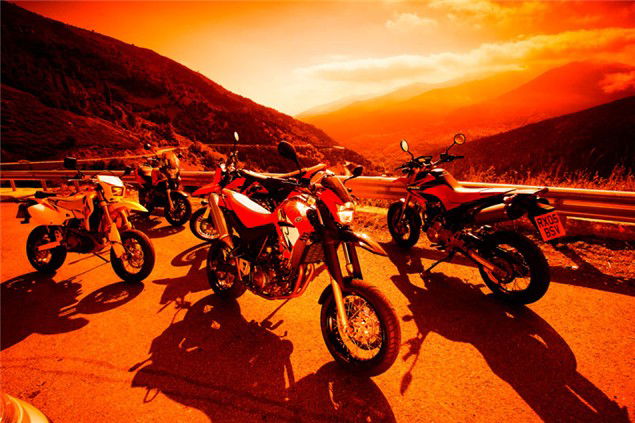
Supermotos. What are they all about? It's a question that's been floating around for years and no one seems to really know the answer. Having started out as a hardcore minority of converted 'crossers, the supermoto scene has bubbled away in the background and is now spilling over into the mainstream.
But is it really in the mainstream? While we have several UK supermoto race series coverage hasn't leapt beyond obscure satellite TV stations and the whole concept of supermoto has been morphed into something completely different. Gone are the back-garden specials, replaced my mass-produced models of what manufacturers think supermotos are. Which is where the confusion really starts.
With our five bikes unloaded from the back of the TWO van the variation between them was clear to see. On one side of the spectrum you have the KTM LC4, which is about as close as you can get to a true competition supermoto. As well as the chunky, racing wet-style tyres, the KTM has all the makings of a converted enduro tool, which it is - the LC4 E it's evolved from (that's 'E' for 'Enduro' in case you were confused) is virtually identical but comes with off-road wheels and different suspension.
Moving along we get Suzuki's DR-Z400SM, which again is a converted enduro bike. But it's a converted enduro bike that was fairly road-biased to start with. So it's a road bike that has come from a fairly easy-going enduro bike that was really just a road bike anyway. Clear? Let's move on. Next comes Yamaha's XT660X, which is a descendent of the good old XT660. In 2004, the XT got a bit of a makeover and out popped the supermoto 'X' version, as well as a funked up 'R'. So it's a soft enduro bike that has been re-designed with supermoto in mind.
Aprilia's ancient Pegaso big trailie has been re-born as the Pegaso 650 Strada, all street focused and supermoto-styled but with a decent nod towards daily practicalities. And finally there's the FMX650, which Honda says isn't a supermoto at all, it just looks like one. It's a Funmoto, whatever that is. Confusing, ain't it?
Then there's the big question: Why do you want a supermoto? You can't go touring, the tank range is tiny, there's naff all comfort and they vibrate like an Anne Summers party after a case of Lambrini. Motorways are out because the engines struggle to hold a constant 70mph, while the riding position hangs you out like a human kite. So, apart from riding in town, what can you do? You've got to get creative. Dunk these babies in the right environment - sunshine, tight twisty roads, and away from prying plod - and suddenly nothing else matters; they could just be the best toys on the planet. Which is why we punted ours to the South of France in the back of a van (expenses wouldn't stretch to the pile cream bill if we rode them) for a few days' charging around the Pyrenees.
Perpignan's only 40-odd miles from the Pyrenees and thanks to local knowledge we know the N116 from the town into the mountains is a stunning road to ride. And anyway, if things aren't good in France it's just a short hop into Spain or Andorra.
So it came to pass that Jim, Rob, Wozza, dedicated van man Daryll and myself found ourselves looking out over one of the most stunning twisty roads we'd ever seen. "I'm not sure I'd fancy that on a sportsbike," said Jim. "It'd be too fast. The only thing between you and a very long drop is a bit of rusty Armco. These bikes should be perfect, fast enough for fun, but without getting messy."
Perfect supermoto country then. Lots of 40-50mph corners, a surface that, on the whole, is excellent, but with a few bumps thrown in. Leathers and helmets on (er, motocross or road lid?) boots done up (same dilemma) and away we go.
Thirty miles of chaos later the road behind is covered with black lines from pointless and highly amusing skids, cars have been wheelied past and every pedestrian within earshot has been backfired at as five grinning riders pull up at a petrol station.
"This is the real deal, a proper supermoto," KTM mounted Jim virtually sobbed. "It vibrates so much at high revs I can hardly see the mirrors let alone what's reflected in them, and I think the seat's broken my coccyx." It's worth pointing out that Jim is particularly brittle, but it shows the nature of the KTM. The orange peril isn't pretending to be friendly so you get a solid seat, vibey engine and zero mod cons. But you also get a very aggressive bike.
"It's a really strong motor," Jim went on, "and pulls hard from low down with a typical, precise enduro gearbox, but riding it for more than an hour? No thanks." And with that he rested his lid on the DRZ's softer seat in an 'I'm riding that one next' way.


